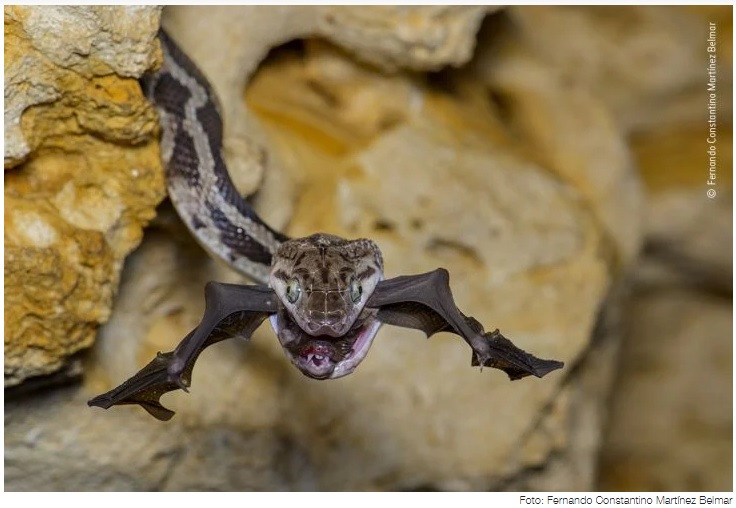Capturing a rat snake just as it was devouring a bat inside a cave in the Mayan community of Kantemó, Quintana Roo, earned Fernando Constantino Martínez Belmar the award for Best Wildlife Photographer of the Year in the Amphibians and Reptiles category.
The Yucatecan photographer had several attempts to enter the contest, but it was this year, 2022, that he finally got up the courage to send some of his images. And he managed to be the winner of one of the most important contests worldwide.
“I went to the cave known as the Cave of the Hanging Snakes, which is a place where you can go and there are community guides who give you a tour and at that point, there is a population of a species of snake called the Yucatecan buzzard snake that has adapted to live in the cave and feed on bats. At night, thousands of bats come out and that is when you see the snakes hanging there waiting for one to pass by and catch it,” explains the photographer.
The Cueva de las Serpientes Colgantes is guarded by the inhabitants of the community, whose mission is to protect this ecosystem and, above all, the snakes. The guides take visitors to the site, but they demand that all life in the area be respected because the attraction is one of the livelihoods of this Mayan site.

Fernando is a member of the Mexican Alliance of Conservation Photography. He is 36 years old and originally from Mérida, Yucatán, and his life is dedicated to photographing nature.
The winner of the contest organized by the Natural History Museum of London, the equivalent of the Oscar in nature and conservation photography, also has a degree in Biology, but he discovered his vocation when he was a student.
This is how Fernando has become involved in a project in Playa del Carmen, Quintana Roo, to document the problems between jaguars and humans, especially with the construction of the Mayan Train.
The Yucatecan assures that he will continue his conservation work because, although the contest represents a great achievement, his goal is always to demonstrate the situation of nature in Mexico.
TYT Newsroom


